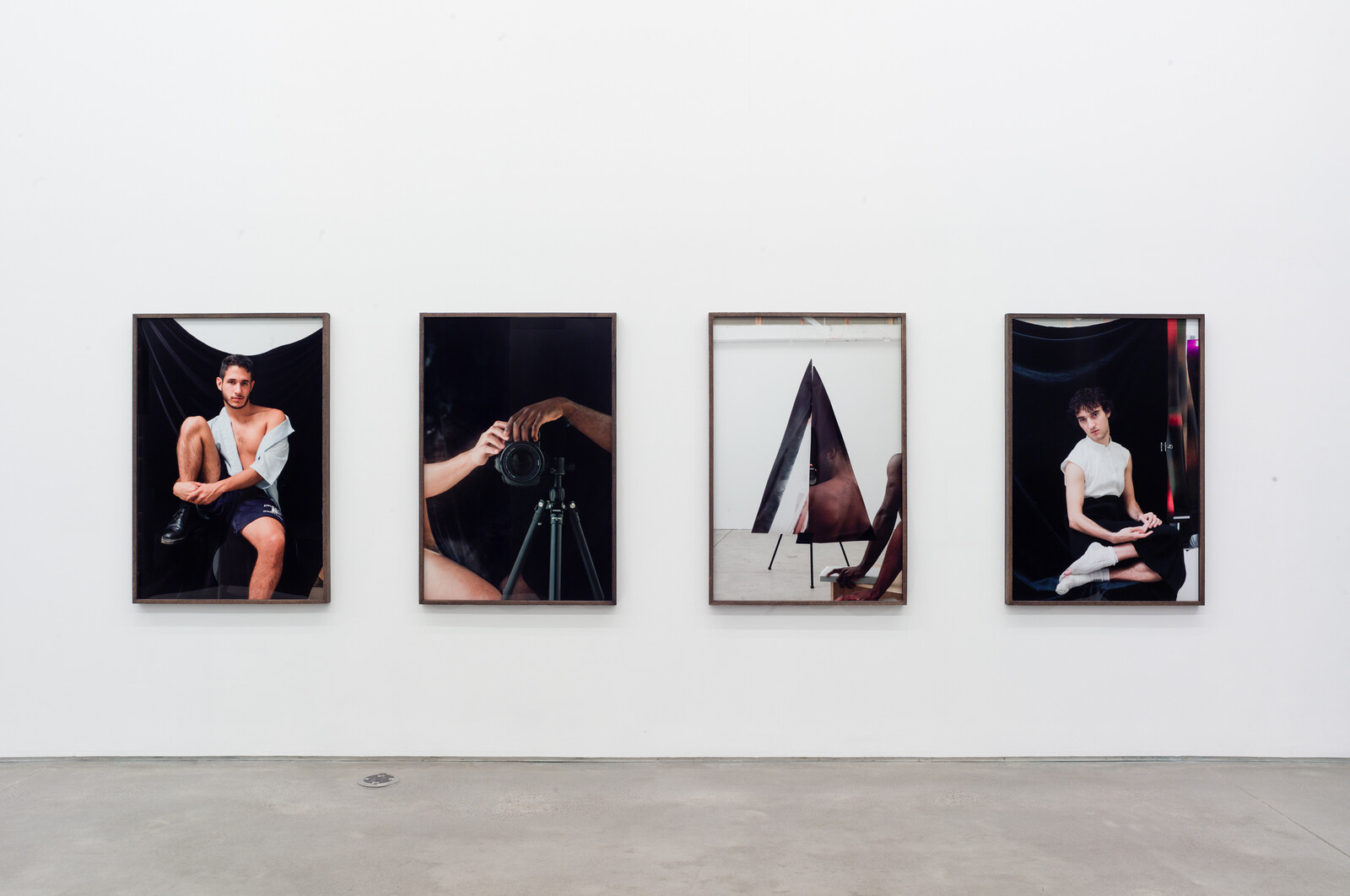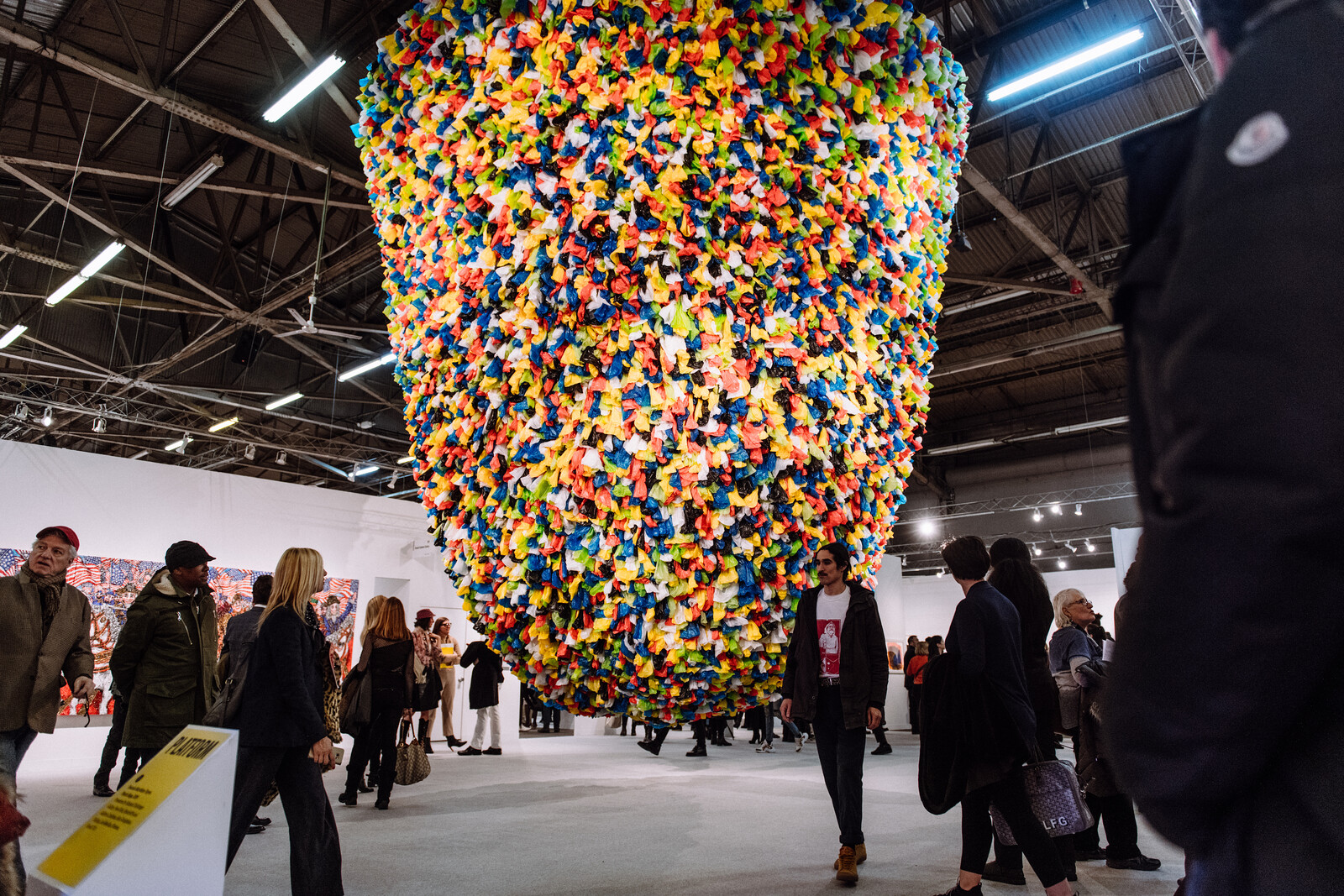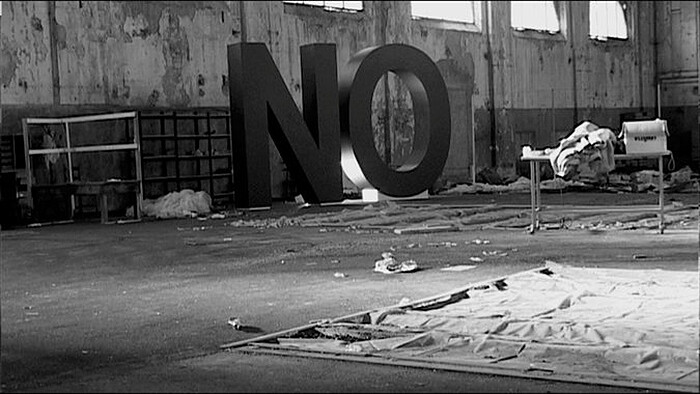Categories
Subjects
Authors
Artists
Venues
Locations
Calendar
Filter
Done
April 5, 2019 – Review
Paul Mpagi Sepuya’s “The Conditions”
Alan Gilbert

A gaze without a frame might be a form of direct perception, or, in the digital age, unprocessed information. Frames are always accompanied by categories, which in turn bring their histories and memories along with them. In this sense, a gaze is only as powerful as the frames and categories, discourses and institutions that support it. When attached to an apparatus for seeing, a gaze becomes structural or systemic. It should also be remembered that a gaze, as feminist scholars and theorists of race have insisted, is an aperture that holds the potential to open onto physical violence.
This may seem a grim way to introduce Paul Mpagi Sepuya’s photographs, which attentively celebrate queer identities and relations. Yet what is most striking about Sepuya’s current exhibition, “The Conditions,” is how strongly it foregrounds the camera’s gaze and the studio as site of image-making. Using sets fashioned from wood, mirrors, and black velvet drapery, Sepuya constructs carefully composed photographs. These images feature his camera, parts of his body, and on one occasion—A Portrait (0X5A6109) (2017)—his entire figure reflected in mirrors.
This desire to oversee both sides of the gaze is crucial to Sepuya’s photographic practice, with its blending of portrait and self-portrait. A …
March 26, 2019 – Feature
New York City Roundup
Amy Zion

Twenty-five years ago, a group of young dealers, including Pat Hearn, Colin de Land, and Matthew, Marks started the first contemporary art fair in New York at the Gramercy Park Hotel. Titled the Gramercy International Art Fair, it spanned floors 12, 14, and 15 (there is no 13, of course) of the hotel, with each gallery taking over a room or suite. In the first iteration in 1994, Tracey Emin slept in the bed in the room where her work was displayed (by Jay Jopling/White Cube). In 1997, Holly Solomon installed two TV screens as part of a work by Nam June Paik in her room’s bathtub. After outgrowing the hotel, in 1999, the fair moved to the original site of the infamous 1913 Armory Show and changed its name. Now it fills two West Side piers and includes a modern/twentieth-century art portion alongside the contemporary. There are more fairs that share the week with the Armory—the Independent, which celebrated its 10th anniversary, Volta (more on that later), and Spring Break, among others.
Amid talks and other initiatives marking the quarter-century celebrations, at the fair there was a room several booths wide that included documentation and restaging of works from the …
April 23, 2015 – Review
Pierre Bismuth’s “Where Is Rocky II? Trailer-Teaser”
Genevieve Yue

Pierre Bismuth’s “Where Is Rocky II? Teaser-Trailer” offers itself as a conceptual riddle. The two videos in the exhibition, one a two-minute teaser, the other a three-minute trailer precisely edited to Hollywood convention, play in alternation, advertising a film about an artwork that may be hidden, forgotten, or non-existent. They also hold the status of this “coming attraction” in a similarly contingent state. In the teaser, Lawrence Weiner’s voice plays over a field of solid green, the same screen used for digital visual effects, or, on a film set, a placeholder for an image that will be added later. Like the white neon letters that served as both advertisement for and a standalone artwork in Bismuth’s 2008 exhibition “Coming Soon,” there’s no guarantee that the promised film that investigates the whereabouts of Ed Ruscha’s Rocky II, a fake rock planted somewhere in the Mojave Desert in 1976 (the date given in the teaser), actually exists. If an artwork is lost in the landscape, and there’s no film to corroborate its location, is it really there?
With Where Is Rocky II?, the answer is a tentative yes. Bismuth has been shooting a documentary, which, as the trailer depicts, follows private investigator and …
July 6, 2012 – Review
Santiago Sierra’s "NO, Global Tour"
Stephen Squibb

For an artist as avowedly controversial as Santiago Sierra, the evidence is hard to locate. Instead of polemical denunciations or excessive apologetics we find an endlessly reiterated testimony to their existence. What is Santiago Sierra? Controversial, the answer comes back, unanimous. Or, almost as often: difficult. But where does this controversy or difficulty take place? Much harder to say. With the exception of the successful campaign to prevent his turning a German synagogue into a DIY gas chamber (a protest “against the banalization of the holocaust”) and his supporting role as the “good-because-antagonistic” relational artist in Claire Bishop’s celebrated attack on Bourriaud’s “bad-because-collective” relatives, there is little in the way of damnation or celebration. And if the latter sometimes arrives well-tempered by furrowed brows, it just as often evinces no such compunction. In fact, Sierra has been on such a run of unadulterated success that the current offering at Team—a road-movie depicting the worldwide travels of his large NO sculpture—grew out of his need to create a work that could travel. Apparently, he wanted to avoid creating the place-specific performative “remunerations” for which he is famous. As he told the magazine ARTPULSE:
“[I]t was too much work, especially when you …